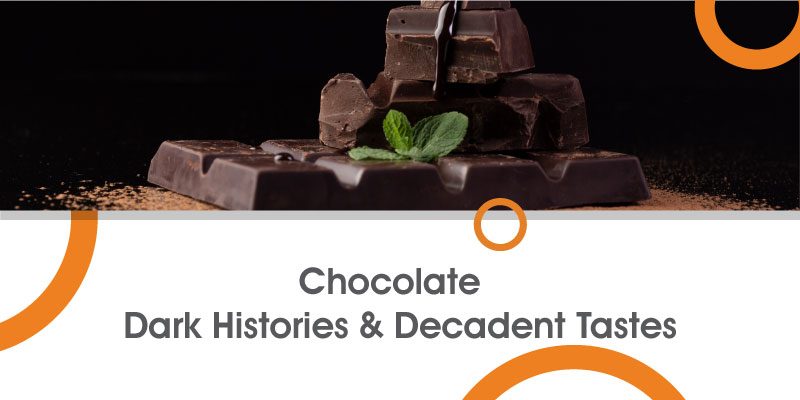Chocolate may be one of the world’s most popular flavours and food types, but it started out with some pretty horrific affiliations. The Mayans and Aztecs associated cocoa and chocolate drinks with human sacrifice, not quite the emotions of joy they elicit today.
It wasn’t until the 16th century when Europeans removed the spicy additives generally mixed with cocoa and blended it with sugar that the craze caught on and never quite died. Today, chocolate is grown around the world, with Côte d’Ivoire and Ghana leading production.
TASTING
Our taste buds present only 10-20 per cent of the perception of flavour; the rest comes through our nose. It’s no different for chocolate. Quality chocolate is made from cacao beans from a single country or region and offers a genetic profile of its origin. Here’s how to taste chocolate.
Look: It should be smooth and shiny, without light coloured spots. A clean snap when it breaks indicates proper tempering. The shades show the percentage of cacao, the type of beans and how they were roasted.
Smell: Hold it close to your nose and breathe in several times.
Taste: Take your time and allow it to melt in your mouth to enable all the flavours to trigger your taste buds and olfactory senses alike.
Texture: The smoother it is, the more refined. Remember though, that high-quality chocolate can be coarse depending on the machinery used.
Focus on flavours: These can develop and change as you breathe out with your mouth closed. Over-roasting lends a bitter and burnt taste, over-fermenting offers a cheesy flavour and under-fermenting can make it taste like cardboard.
Aftertaste: The taste of quality chocolate can linger for more than 20 minutes, and some offer a number of flavours.
Use a sensory wheel to help you detect ranges of flavours from different chocolates.
ARTISANAL INDIAN BRANDS
South India is the nest of India’s cacao where beans are harvested in Tamil Nadu, Kerala, Andhra Pradesh and Karnataka. Homegrown, organic brands have cropped up, creating employment opportunities while working on sustainability. Among these are Chennai-based Kocoatrait, touted as India’s first zero-waste chocolate; Mysore-based Naviluna, touted as the first worldover to exclusively use organically certified Indian cacao beans; Palghar-based Pascati, India’s first USDA organic & fairtrade chocolate maker; Mason & Co from Auroville; Kochi-based Paul & Mike; and Gurugram-based Chokriti.
SUSTAINABILITY
In terms of greenhouse gas emissions, chocolate is one of the worst foods to buy. The industry is also rife with human rights violations and child slavery.
Rainforests are razed to make room for more cocoa trees and children as young as five have been known to work in dangerous environments in order to supplement profits for cocoa farmers often paid just $1 per day by corporations. After being faced with a lawsuit in the US, corporations including Nestlé, Mars, and Hershey are still unable to guarantee that their chocolates are free of child slavery more than 20 years after pledging to eradicate it in their supply chain. To reduce its climate impact, cocoa trees should ideally be planted using shade-growing and multi-cropping, and pruned rather than replaced.
As an industry that profits immensely off chocolate, it’s vital that culinary entrepreneurs, chefs, restaurants and other ventures work together to improve transparency across supply chains so that this incredibly delicious food product is free of exploitation.







Leave a Reply